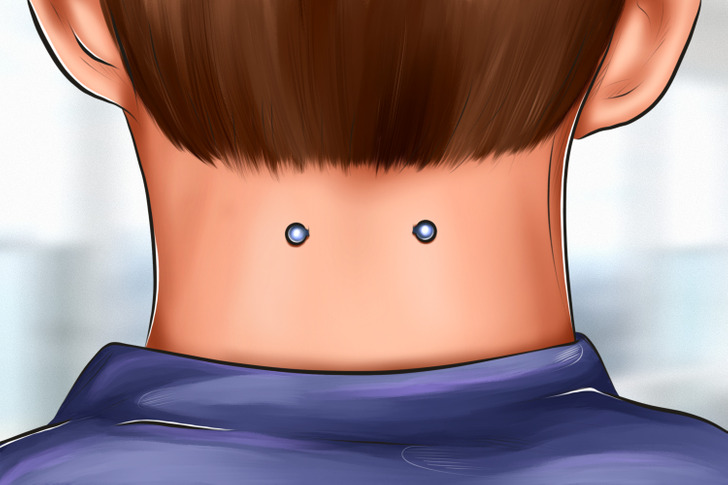A Guide to Types of Body Piercings
Piercings are one of the most popular body modifications, in which a piercing artist places a piece of jewelry in a specific part of the body by using a needle. Even though this procedure can be painful, the result can give you a bold and attractive look.
5-Minute Crafts has prepared this guide with the most common types of piercings there are.
❗ Important: Before getting a piercing, make sure to be informed about the adverse side effects that this type of body modification can cause.
A. Ear piercings
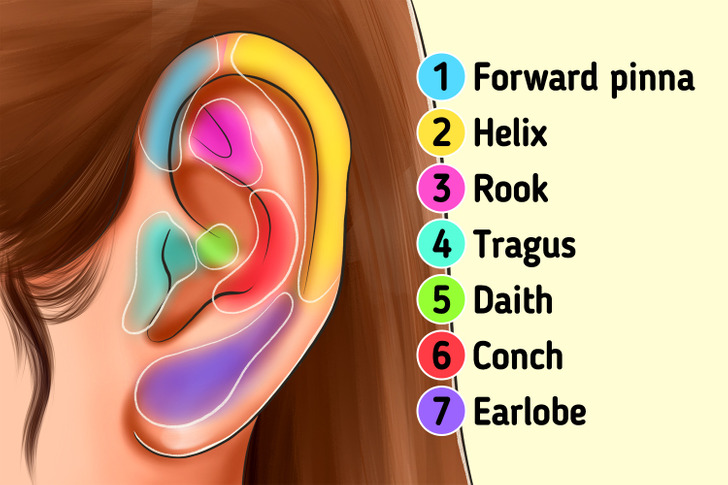
- Forward pinna: also known as “forward helix”, it’s located on the top rim, where the ear connects with the side of the head. People who wear glasses must be cautious with this type of piercing, as the arms of the glasses may rub against the jewelry, causing poor healing and irritation.
- Helix: this type of piercing can be placed anywhere along the outer rim of the ear, on the top half specifically.
- Rook: this is located in the highest fold of cartilage, below the top side of the upper ear rim. This part of the ear can vary according to the person’s ear anatomy, but a piercing here can be possible by choosing the right angle.
- Tragus: this is placed in the center of the small portion of cartilage located in front of the ear canal, pointing backward.
- Daith: this corresponds to piercings done on the fold of cartilage that is right below the rook, close to the ear canal.
- Conch: this refers to piercings in the smooth part that creates the back of the ear. The name comes from its resemblance to a conch shell.
- Earlobe: this is one of the most popular piercings in the world. It can be located anywhere in the main area of the earlobe.
B. Nose piercings
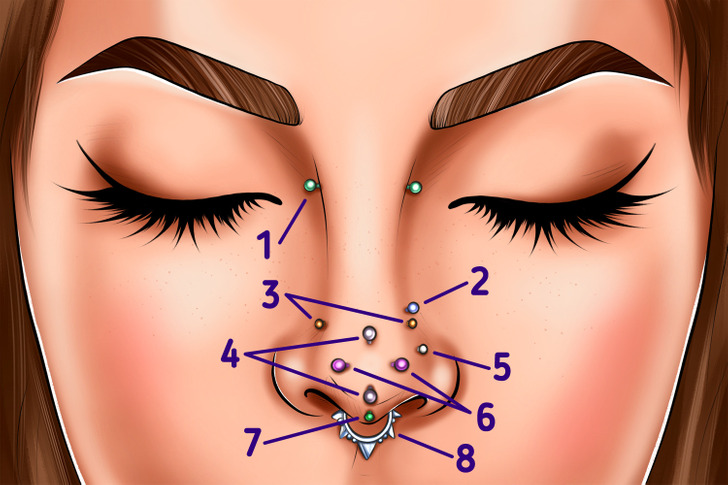
- Bridge: it’s a horizontal surface piercing located at the top of the nose bridge, between the eyebrows and eye sockets.
- High nostril: it’s very similar to a nostril piercing, but it’s placed higher up on the nose bridge. Due to its location, it’s not possible to use a nose ring for this type of piercing.
- Nasallang: it’s done through the nostrils and the septum. Here, the piercer inserts the needle through one nostril, then through the septum and, finally, it comes out through the second nostril. Once placed, it’s possible to see it in the nasal cavity.
- Rhino: also known as “vertical tip,” it’s located in a vertical position through the tip of the nose, going from the upper part of the tip to underneath the tip, close to the septum.
- Nostril: it’s placed right along the curved cartilage that creates the sides of the nose.
- Austin bar: similar to a rhino piercing, it’s located through the tip of the nose, but horizontally. Unlike a nasallang piercing, an Austin bar piercing can’t be seen in the nasal cavity as it isn’t performed through the septum.
- Septril: it’s placed through the bottom tip of the nose. It’s a combination of a rhino and a septum piercing.
- Septum: it’s done in the thin section of tissue between the nostrils, ideally in a portion of flesh known as the “columella.” However, this can depend on each person’s nose anatomy. If there isn’t a columella, the piercer will place the piece of jewelry through cartilage.
C. Lip piercings
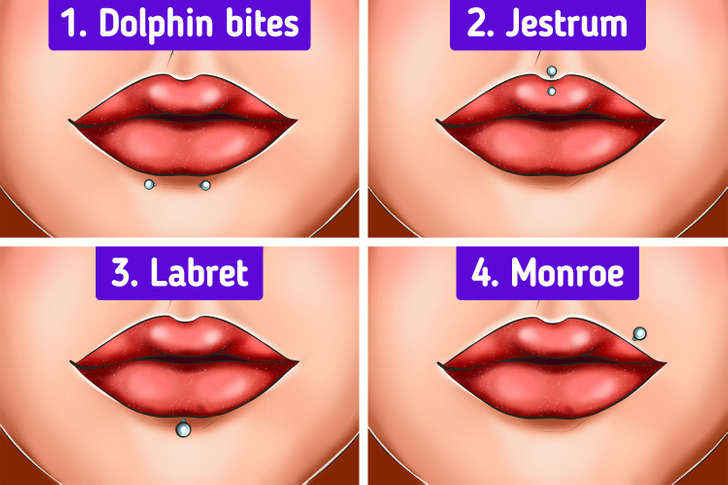
- Dolphin bites: they are a pair of piercings symmetrically located on the sides of the lower lip.
- Jestrum: it’s located in the upper lip, starting right in the center and coming out in the middle of the upper lip.
- Labret: it’s placed in the middle of the lower lip, right above the chin.
- Monroe: it’s performed on the left side, above the upper lip. It was named after Marilyn Monroe’s beauty spot. A piercing on the right side is called a “Madonna.”
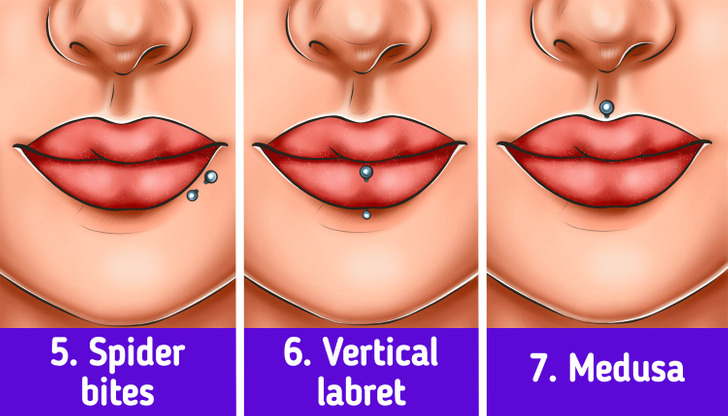
5. Spider bites: they’re a pair of piercings performed close together on either side of the lower lip.
6. Vertical labret: it’s located on the lower lip. One side of the piercing is performed in the middle of the lower lip, and the other side comes out of the center of the bottom of the same lip, right above the chin.
7. Medusa: also known as “philtrum.” It’s placed above the upper lip, right in the middle.
D. Other facial piercings
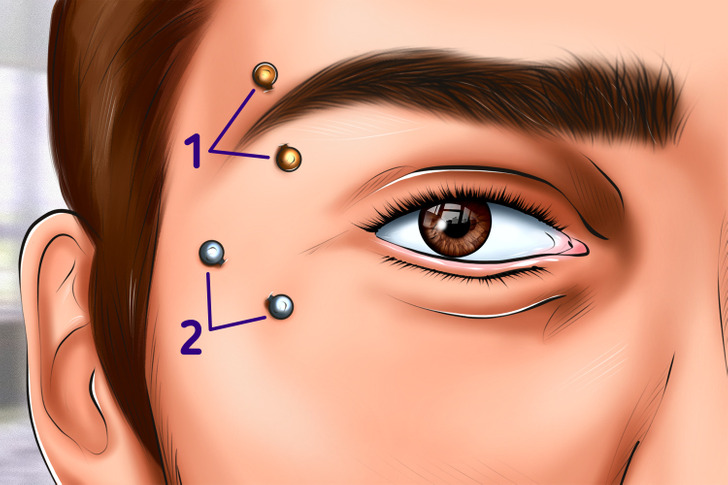
E. Oral piercings
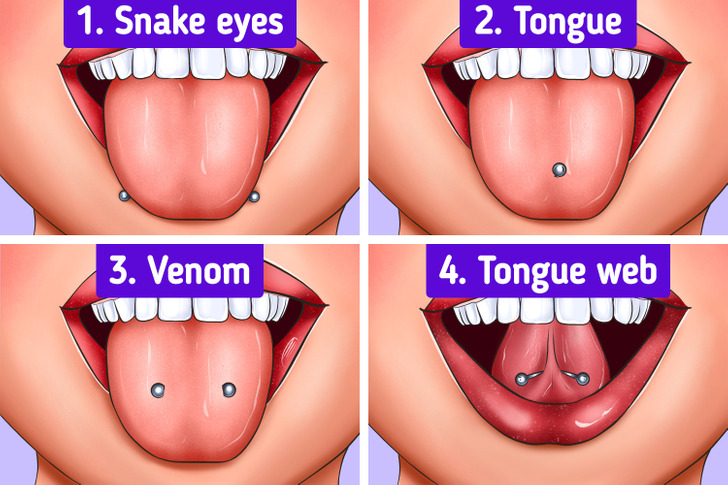
- Snake eyes: it’s performed through the tongue horizontally, from side to side.
- Tongue: it’s similar to a snake eyes piercing, but the piece of jewelry is located vertically through the tongue.
- Venom: it’s a double piercing placed on both sides of the tongue, near the front part.
- Tongue web: the piece of jewelry goes through the tongue frenulum, which is the vertical tissue located under the tongue.
F. Body piercings
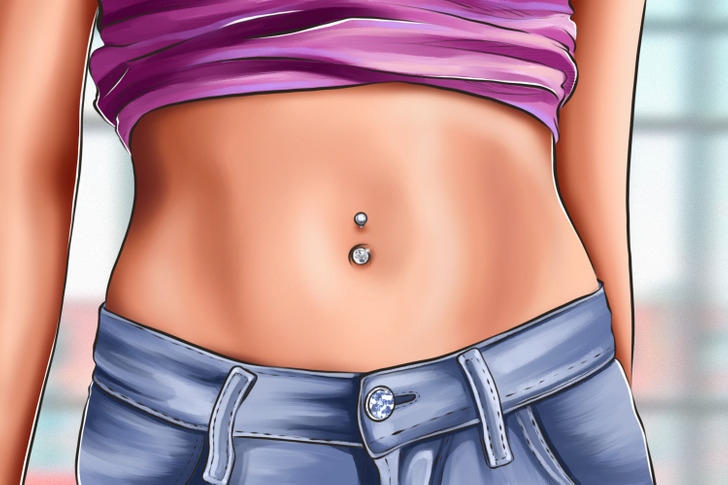
- Navel: also known as “belly button piercing”, it’s done along the upper side of the navel. It’s considered one of the least painful piercings as it is performed in a place with few nerve endings.
